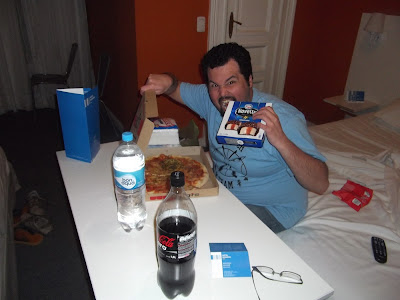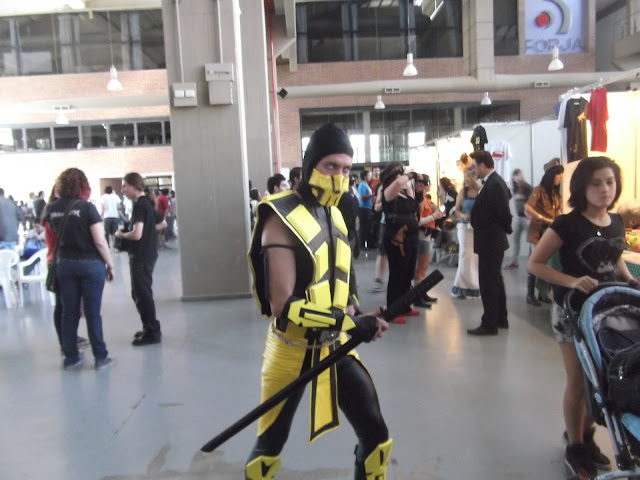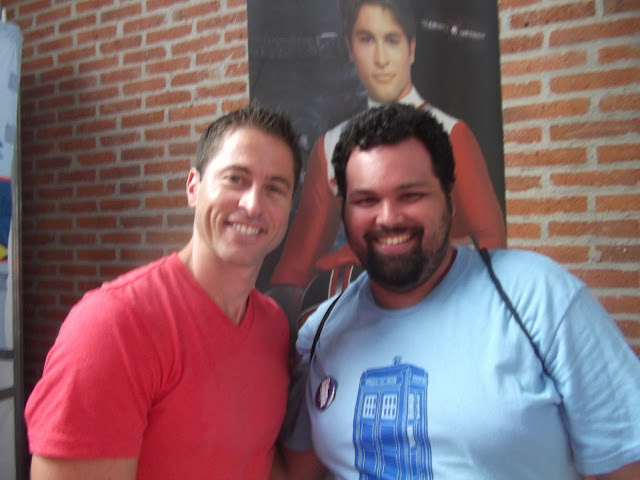We spent the third and fourth days of our trip to Buenos Aires sightseeing and snapping photos of the city. As we wandered through different neighborhoods, we came across several beautiful theaters—some of which reminded us of Broadway back in Manhattan. Interestingly, there seemed to be more stage productions than movie theaters, highlighting the city’s strong cultural emphasis on live performance.
We found a Cuban restaurant called “Oye Chico!” (translated as “Hey kid!”), which is a common phrase used by Cubans. My spouse and I love Cuban food. Being from Miami, I got the chance to eat lots of Cuban food growing up. Unfortunately, I didn't think I'd ever get the chance to eat any again, unless I made it myself. So this seemed like the right opportunity to try something we hadn’t had in the 15 months we’d been in Argentina.
We had originally planned to try a restaurant called Oye Chico!, but it didn’t quite work out—it was closed during the day and only opened at night. We told ourselves we’d go back later, but in the end, we never did.
Instead, we stumbled upon an amazing pizza spot called UGI’S. It’s the first place we found in Argentina that really nailed brick oven pizza—done right! The taste and texture were surprisingly close to New York–style pizza (though without the pepperoni). So, instead of Oye Chico!, we grabbed a pizza from UGI’S and brought it back to the hotel.



On our final day in Buenos Aires, we had to check out of Hotel Mundial by noon. Since our train back to Córdoba wasn’t until 8:30 p.m., the hotel kindly held our bags for us so we wouldn’t have to lug them around the city all day.
We needed to charge our phones and MP3 players for the long train ride ahead, but unfortunately, the plugs we brought didn’t work with the outlets. After asking around, we learned that many of the small electronics shops in the city are owned by members of the Asian community. We also noticed there were significantly more Asians in Buenos Aires than in Córdoba—enough that there were Asian buffet restaurants, much like the ones we’re used to seeing in the States. As tempting as it was to stop and eat at one, we decided against it. With 21 hours on a train ahead of us, we didn’t want to eat anything too heavy.
We also observed a more visible Black population in Buenos Aires than in Córdoba. Sadly, with a greater mix of cultures, we also noticed signs of racism. While walking past a building, I saw graffiti that read “Negros Tóxicos,” which translates to “Black people are toxic.”
Update: One reader later commented that in Argentine slang, “negro” is often used not strictly in reference to race, but as a derogatory term for the poor—especially those known as villeros (people who live in informal settlements or shantytowns).

That wasn’t the only disturbing piece of graffiti I came across. It’s no secret that some Argentinians hold anti-American or anti-British sentiments, and while I had never seen this kind of expression in Córdoba, I did encounter one particularly striking piece of graffiti in Buenos Aires. It read: “No a la ley anti-terrorista”—which translates to “Say no to anti-terrorist laws.”
To me, it seemed like a troubling message—one that could be interpreted as support for terrorism, or at the very least, opposition to legislation meant to prevent it. Regardless of its intent, it left a strong impression.
Later, as I walked past an HSBC Bank—a well-known British institution—I noticed someone had spray-painted the words “Fuera Ingleses” on the building. It roughly translates to “British, leave!”
It was another reminder of the underlying political and historical tensions that still linger in some parts of Argentine society.
In many ways, Buenos Aires reminded me of home in New York. It felt more commercialized, people spent more freely, and there was greater cultural diversity.
Despite some of the racist graffiti we came across, I want to emphasize that we personally never experienced discrimination during our four-day stay. We also didn’t witness anyone else being treated unfairly. On the contrary, most of the people we met in Buenos Aires were friendly, welcoming, and, in many cases, more open-minded than those we encountered in our host province.
Funny enough, for the first time since arriving in Argentina, Córdoba actually felt like home—and I couldn’t wait to get back.
I loved visiting Buenos Aires, but I was definitely looking forward to returning to the calmer, less hectic pace of life in the province of Córdoba.
I’ll be posting a video soon with some of the footage I captured during our time in Buenos Aires—so be sure to check back!
And as always, thank you to everyone around the world for supporting my blog. Your readership means so much to me.
Related Posts:
American Expats in Buenos Aires: Day 1 - The Arrival
American Expats in Buenos Aires: Day 2 - The Search for
KFC and Wendy's
Racism in Argentina




























































